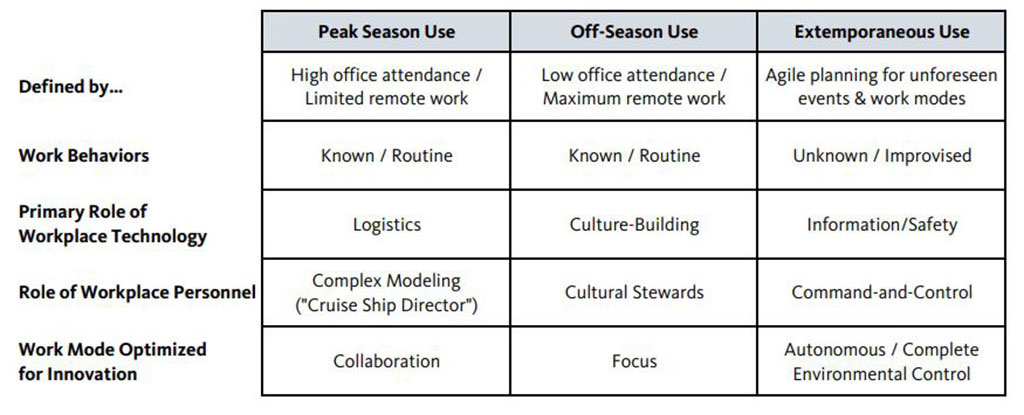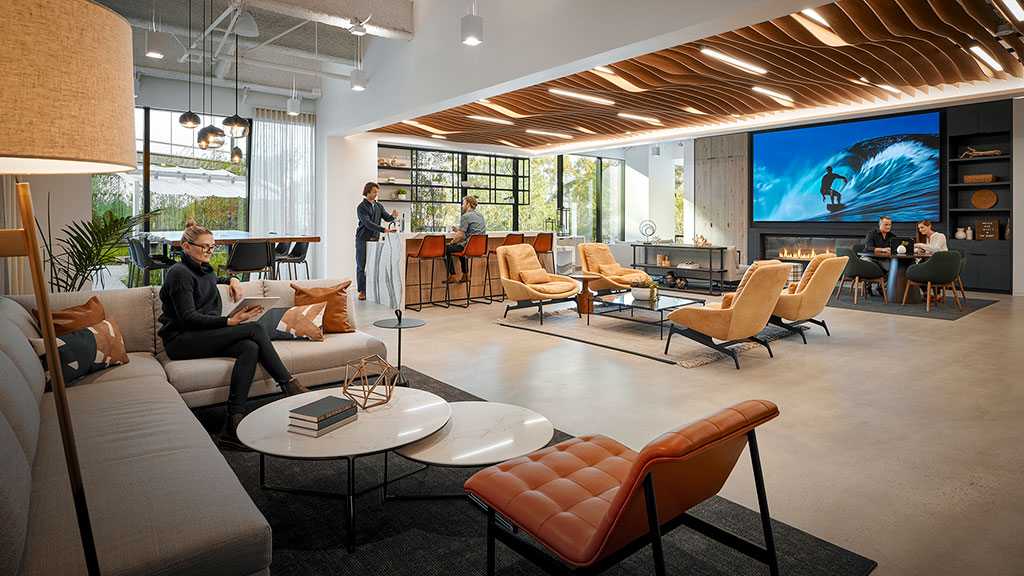The Future of Work Is Seasonal
August 09, 2022 | By Brian Stromquist, Louis Schump
Our lives and behaviors are seasonal. As we transition between summer and fall, we’re all experiencing some kind of seasonally influenced behavior, whether it’s planning a last-minute vacation, purchasing dorm room bedding for off-to-college students, anticipating the start of NFL football or Premier League soccer, or navigating the latest Omicron wave.
Of these behaviors, the last of them — the collective weathering of successive COVID variants — signals that the pandemic is potentially moving into its endemic phase, and that what we once thought might be beatable in a year or two is now going to be with us for many years to come.
With that acknowledgement, how might we rethink our approach to work so that instead of resisting the cyclicality of COVID, we accept it as one of the many ways in which our lives are shaped by seasonal events and seasonal behaviors? Can this be the catalyst for rethinking the future of work and aligning work behaviors with life behaviors? What if the future of work is seasonal?
Our workplaces might not yet be set up for seasonal work, but you could possibly make the case that seasonal work is hard-wired into us. From the earliest hunter-gatherers, to subsequent agrarian societies, our sustenance and survival was linked to performing certain tasks at certain times of the year — and in different locations. With these behaviors in mind, should we be asking the workplace to accommodate all work tasks at all times of the year? Or do we accept that the workplace may have peak seasons and low seasons, and develop real estate and operational models to accommodate that?
To explore this further, we’ve identified three categories of seasonal use cases to help us articulate the respective impacts to in-office work, remote or hybrid work, and workplace operations. Peak Season Work looks at periods of increased office attendance and in-person collaboration. Off-Season Work is defined by increased remote work and focus-based activities. The final use case, Extemporaneous Work, looks at scenarios we can’t necessarily plan for and the impact that those have on our work behaviors. Side-by-side, they look like this:

Now we’ll explore the three modes in greater detail.
Peak Season Work
During Peak Season Work — which could vary by industry, geography, climate, and public health status — employees will flock to the office for collaboration, socialization, and cultural connection. With more people, there’ll also be more robust amenity offerings, culinary programming, and social events. The physical workplace will still offer a full range of work environments for different workstyles, but the allocation of space within the workplace will weigh heavily towards formal and informal meeting spaces. This is the season when innovation is achieved through in-person collaboration.
From an operations perspective, the Peak Season is the most logistically complex, requiring a full workplace team to track employee flow, enable concierge-like experiences, and pivot the workplace between different event-based and collaboration-based use cases. Tech tools will play a significant role as well, using attendance and utilization data to optimize workplace performance.
Off-Season Work
In the Off Season, work shifts away from the office; employees enjoy a spectrum of remote or hybrid work options. Attendance in the physical workplace drops off accordingly, although the office remains an option for focus work and limited collaboration. Office amenities and programming are curtailed as well, taking on a more “self-service” model for employees in attendance. This is a season that favors focused work; innovation is enabled through removing workplace distractions and being able to completely tailor your remote work environment to suit your needs.
Because the workforce is primarily distributed, workplace teams turn their attention to building and maintaining company culture through virtual programming. Within the office, workplace services are offered by a lean team who provides a limited suite of programming options.

Extemporaneous Work
If Peak Season Work and Off-Season Work are rooted in predictable routines and workplace use patterns, Extemporaneous Work acknowledges the occasional need for spontaneous, agile planning. Whether it’s an extreme weather event or a last-minute company all-hands, this scenario explores the need for both employee agency and command-and-control decision making. Workplace Operations teams are critical to its success, acting as hubs for information and logistics. With this information, employees are then able to make decisions about how they’re going to navigate uncertainty on their own terms — until seasonal work routines have been reestablished.
Long-Term Impact
For seasonal workstyles to be truly successful, we’ll need to address the real-life concerns of (a) the workplace personnel who are critical to its operation, and (b) the implications this has on real estate. From a personnel perspective, we could imagine a new vision of what a workplace operations generalist might look like: a savvy logistician in the Peak Season, a digital enculturator in the Off Season, and a stabilizing empath in times of uncertainty.
Alternately, we could see the rise of workplace operations nomads; employees who jump from Peak to Peak, Off-Season to Off-Season, carrying their specific expertise to multiple organizations.
For real estate, we’ll need to solve for dormancy periods; how might we address underutilized real estate during Off-Season/remote work periods. Solutions here could include temporarily decommissioning spaces to save on overhead costs. Alternately, we can continue to explore positioning workplaces in 20-minute cities and affinity districts, allowing off-season offices to operate as swing spaces for other types of community programming.
Ultimately, the end game is creating a future of work that results in more resilient employees and more resilient companies. This is a vision that’s both responsive to the realities of the world we live in, and allows us to align our work with the myriad other ways that our lives and behaviors are seasonally influenced. The resultant balance will ideally make us happier, more productive, and ready for whatever the world serves us next.
For media inquiries, email .


